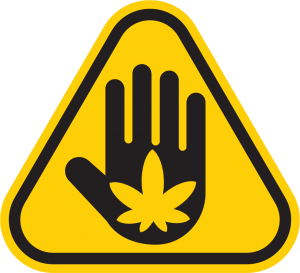 Employers even in the cannabis industry can expect increased enforcement by the Occupational Safety and Health Administration (OSHA) under the Biden administration and possibly emergency temporary standards to combat COVID-19. The hiring of more OSHA inspectors also is likely.
Employers even in the cannabis industry can expect increased enforcement by the Occupational Safety and Health Administration (OSHA) under the Biden administration and possibly emergency temporary standards to combat COVID-19. The hiring of more OSHA inspectors also is likely.
The Biden campaign has stated publicly that the development of an emergency temporary standard is a priority for the new administration. What it will look like is much more difficult to say.
Possible Safety Standards
 California, Michigan, Oregon, and Virginia have emergency temporary standards, which are all different. The Virginia standard is quite long and can be somewhat complicated for uninitiated employers to follow. Other states have taken a more streamlined approach – for example…
California, Michigan, Oregon, and Virginia have emergency temporary standards, which are all different. The Virginia standard is quite long and can be somewhat complicated for uninitiated employers to follow. Other states have taken a more streamlined approach – for example…
Virginia has relied heavily on after-the-fact Frequently Asked Questions (FAQs) to guide employers. Hopefully, any federal standard will learn from the Virginia training FAQs and evolve from common questions faced by employers in the Commonwealth.
It is expected a federal regulation to resemble California’s recent emergency training regulations. California’s rule imposes standards on all employers rather than Virginia’s, which allows employers to self-assess their level of risk. A federal emergency temporary standard from OSHA (learn more in our “Introduction to OSHA” training) that likely would encompass:
- Protective Equipment
- Administrative Controls (like distancing, circulation of employees in limited numbers, and requiring work from home when feasible)
- Sanitation and Housekeeping
- Employee Training
Additional topics that might be addressed, though these are less likely to be considered, are:
- OSHA Case Reporting
- Engineering Controls (like the speed and regularity of movement of air in a workspace)
- Treatment (for employee time off for quarantining or recovery)
The emergency regulations might also mandate the use of face coverings, although that is more of an open question. It’s almost a guarantee there will be an emergency temporary standard.
OSHA under the Trump administration already has been drafting an emergency temporary standard proposal in anticipation of a possible deal on the next stimulus package – for example, granting employer liability immunity in exchange for a standard.
That work might be a model for an emergency temporary standard in the Biden administration. Alternatively, Doug Parker, California OSHA chief, is on Biden’s transition team and California’s emergency temporary standard may be a model for a federal standard.
There’s a “decent chance” Parker will be named assistant secretary of OSHA. An assistant secretary of OSHA was not confirmed during the Trump administration, so there wasn’t as much deregulation as some expected.
Increased Enforcement
 One commitment the Biden campaign has said it will make is to double the number of OSHA enforcement staff. While the size of the increase is unlikely, some increase is certain. It is expected the hiring of 200 to 250 more inspectors and once they’re trained – maybe 18 months later – we would expect to see more inspections.
One commitment the Biden campaign has said it will make is to double the number of OSHA enforcement staff. While the size of the increase is unlikely, some increase is certain. It is expected the hiring of 200 to 250 more inspectors and once they’re trained – maybe 18 months later – we would expect to see more inspections.
The number of OSHA inspectors will depend on the budget Congress approves for OSHA. We would suspect that the Biden administration – based on close ties to labor and labor unions – would prefer to increase the number of inspectors, but the final budget framework drives the result.
While the Department of Labor and OSHA leadership could shift some of the current OSHA staff to enforcement from other duties, ultimately the budget is the key factor that will drive the number of inspectors. OSHA is inundated with complaints right now and in order to avoid exposing inspectors to COVID-19 risks in the field, the agency is limiting the number of onsite inspections.
Although we’ve observed an uptick in onsite inspections in certain industries, OSHA is largely responding to complaints now by sending employers what are known as informal “phone fax” letters instead. Employers may respond in writing to the allegations against them related to COVID-19.
Organizations can submit written descriptions of what they’re doing to combat COVID-19, any written COVID-19 training plan, employee training materials, training logs, or photographs of face coverings and social distancing signs.
In large part, OSHA closes out complaints after receiving an employer submission. If the Biden administration adds more inspectors, this likely will lead to more extensive onsite inspections.
Permanent Infectious Diseases Standard
A temporary emergency standard will provide the impetus for permanent infectious disease standards.
A permanent infectious diseases standard would be a bigger lift than a temporary standard because before issuing such a standard, the administration would have to establish a significant risk of harm, economic feasibility, and technological feasibility.
Although it’s by no means impossible, each of these becomes more difficult to establish outside of the context of the current global pandemic. Indeed, if the past is any guide, OSHA has tried and failed in prior efforts to complete rulemaking on a permanent infectious standard.
The COVID-19 pandemic has created unusual momentum for the agency to take another look at this permanent rulemaking approach. At a minimum, COVID-19 has focused everyone on the benefits of having workplace infectious disease plans in place and ready to go before an emergency.
Let us know what you think.




Responses